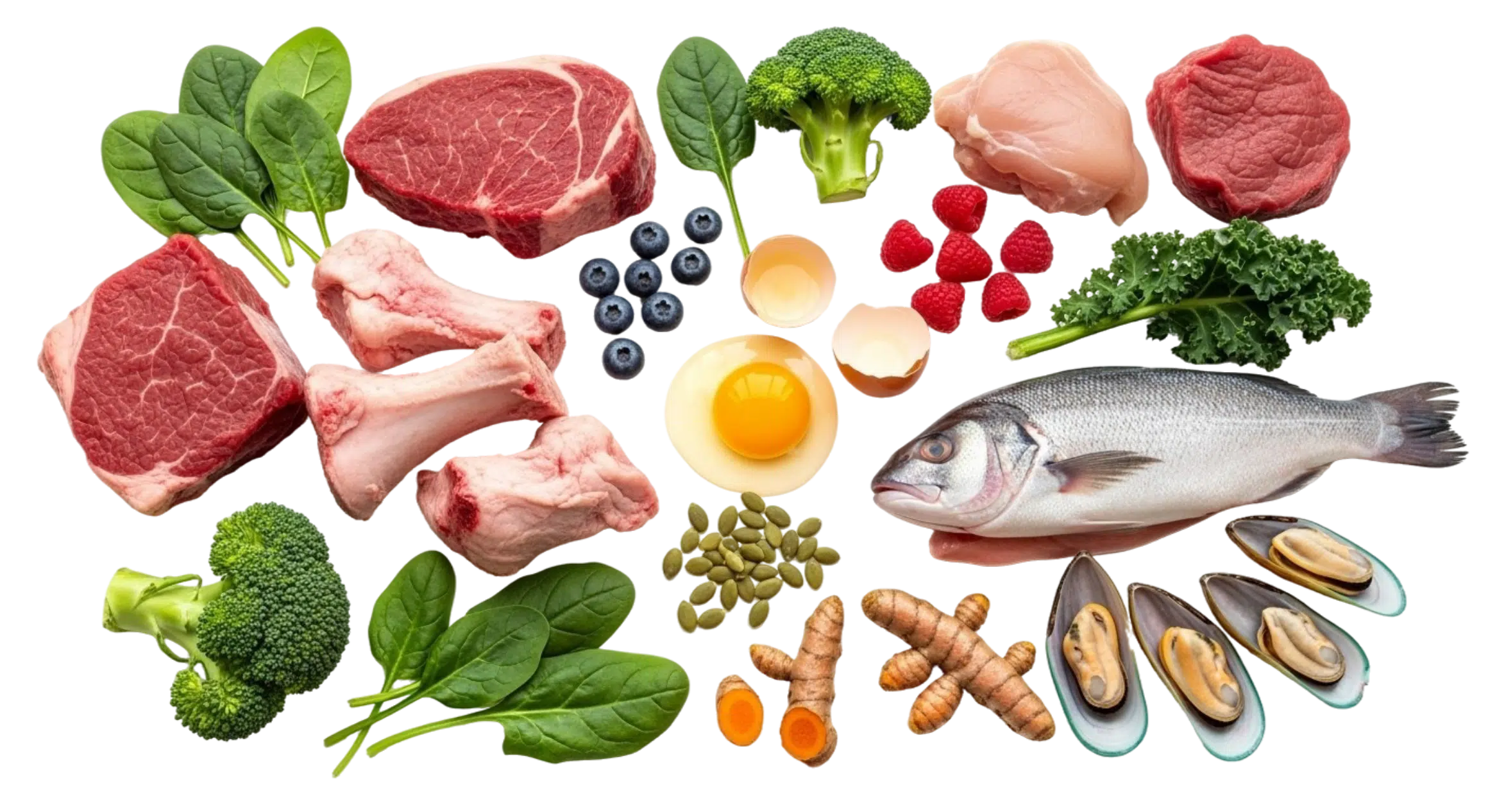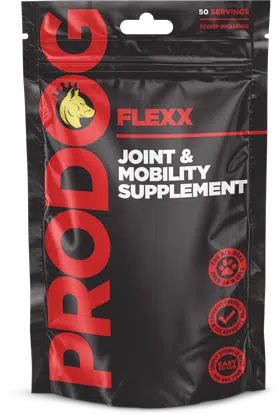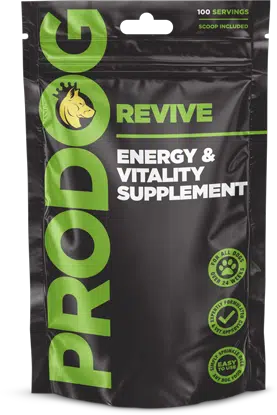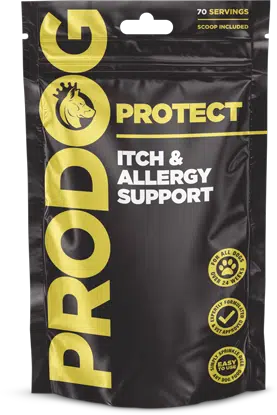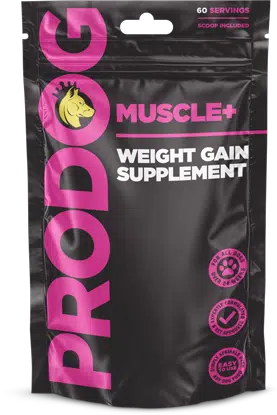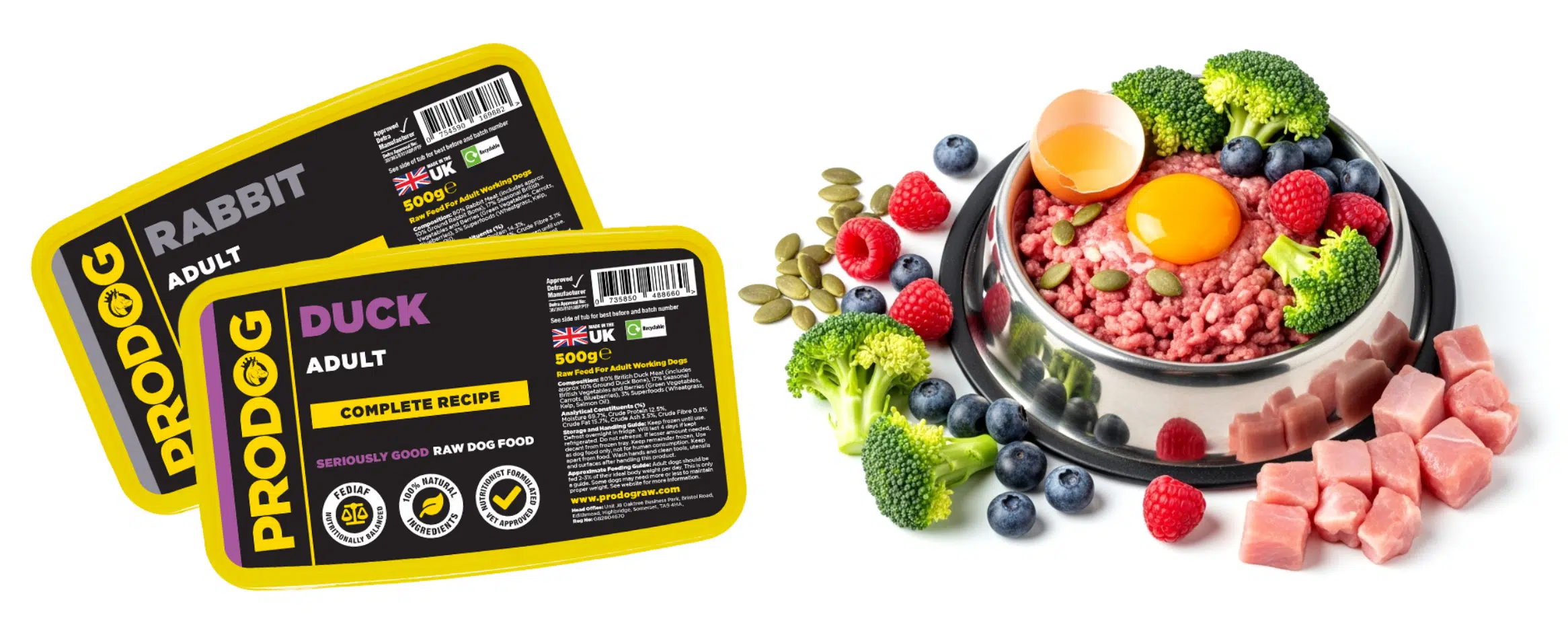And what about what they don’t need?
Dogs have little requirement for carbohydrates, especially refined ones. However, most commercial dry dog foods are loaded with them, often making up more than 50% of the recipe. Why? Because carbs like grains, legumes and starchy fillers are cheap to bulk out food, not because they benefit your dog. In fact, for many dogs, they do the opposite: causing digestive issues, inflammation, low energy, and poor condition.
That’s why more and more dog owners are turning to grain-free dog food or making the transition to feeding their dogs a fresh diet. Because when we feed dogs the way their bodies are designed to eat, the change is remarkable.
Better digestion. More vitality. Shinier coats. Healthier teeth. Improved mobility
Because when your dog eats better, they live better. And as someone who truly cares, you deserve to see that transformation firsthand.
Is Raw Food Good for an English Springer Spaniel?
Raw dog food is whole food served in their most natural state with no heat processing. It’s the most biologically aligned option for dogs. It delivers nutrients in their most digestible and usable forms, with no need for synthetic additives, preservatives or mystery fillers. For dogs, raw feeding isn’t just a trend; it’s a return to what their bodies are truly designed for.
Let’s be honest: you don’t see wolves in the wild rummaging in wheat fields or sniffing out dried biscuits. Canines were built for meat.
A raw, species-appropriate diet, also referred to as BARF diet for dogs (biologically appropriate raw food diet), includes muscle meat, organ meat, bone, raw fats, and a small amount of vegetables or berries. It mirrors the nutrition dogs evolved with, and their bodies still expect today.
Contrast that with ultra-processed commercial dog food. While convenient, it’s the exact opposite of raw. The high-heat manufacturing process depletes nutrients, denatures proteins, and creates inflammatory compounds [1]. Worse still, the added carbs, synthetic vitamins, and often rancid heated fats can contribute to a long list of chronic health issues that are now on the rise — not just in dogs [2], but in humans too. [3]
We’re talking:
- Obesity
- Diabetes
- Pancreatitis
- Autoimmune diseases
- Chronic skin issues
- Poor gut health
Now ask yourself: if you wouldn’t feed your child a diet of ultra-processed food every day, why settle for that standard when it comes to your dog?
In short: a raw diet for English Springer Spaniels is a powerful way to protect health, improve longevity, prevent illness, and promote a happier, more vibrant life.
Here are just a few of the benefits dog owners often notice when switching to a raw diet:
- Better digestion & smaller, less smelly poos
- Shinier coat and healthier skin
- Improved energy, mood, and mental clarity
- Better dental health
- More stable weight and muscle tone
- Reduced allergy symptoms and inflammation
Additionally, raw diets eliminate many common triggers of digestive upset and inflammation, including starchy carbohydrates, grains, legumes, and artificial additives.
The great news? As more dog owners become aware of the benefits of fresh, natural feeding [4,5], the industry is evolving. Raw food manufacturers are stepping up, making it easier than ever to feed real food, with the convenience of ready-made meals.
But as with any dog food, quality matters. Not all raw dog food is created equal.
That’s why choosing a trusted supplier like ProDog matters. Our DEFRA-approved facilities and FEDIAF-compliant recipes (the European benchmark for nutritional balance in pet food) ensure every meal meets the highest standards in canine nutrition.
Expertly formulated, packed and blast-frozen for freshness, each meal delivers exactly what your English Springer Spaniel needs in the correct ratios.








